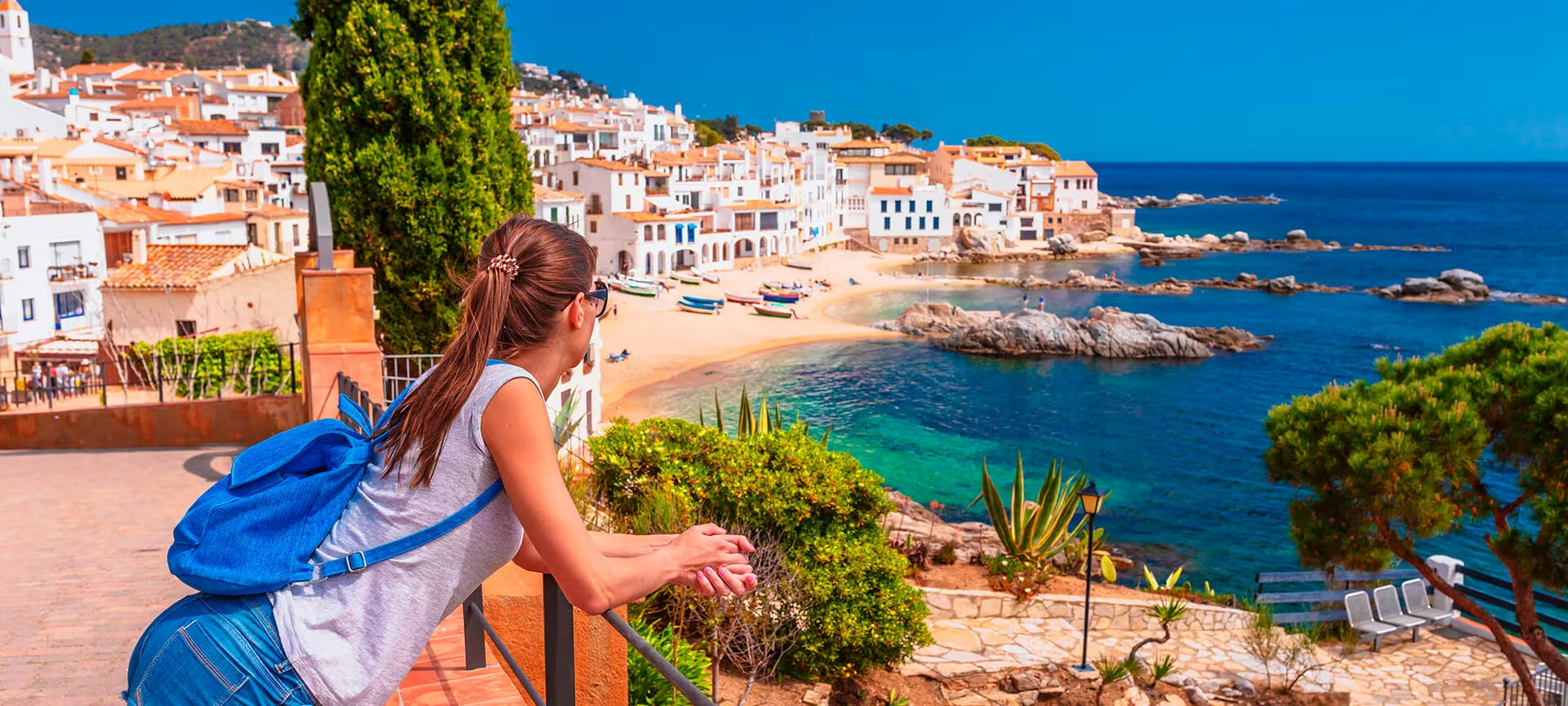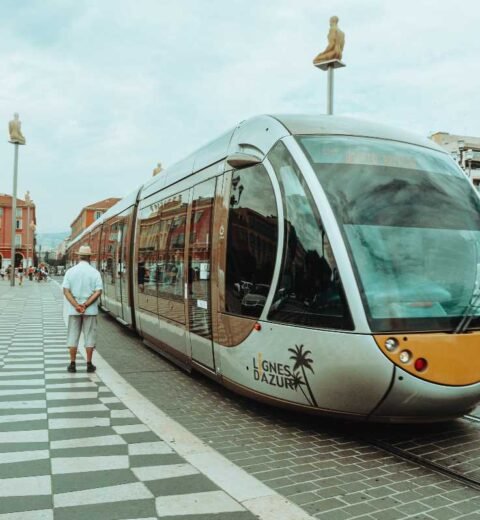Spain, with its vibrant culture, stunning landscapes, and rich history, is a dream destination for travelers worldwide. From the sun-soaked beaches of Costa del Sol to the architectural wonders of Barcelona and the flamenco rhythms of Seville, planning a trip to Spain can be both exciting and overwhelming.
This step-by-step travel guide will help you craft the perfect Spanish vacation tailored to your interests, budget, and timeline.
Step 1: Define Your Travel Goals and Interests
Before diving into logistics, clarify what you want from your Spanish adventure. Spain offers a diverse range of experiences, so narrowing your focus will shape your itinerary.
Enjoy Your Event Stress-Free with Euro Travelo
Planning a trip to attend a festival, concert, or business event in Europe can be overwhelming—tickets, travel, accommodation, and local logistics all take time and effort. Euro Travelo makes it simple by providing everything you need through one trusted company. You save time, avoid stress, and enjoy a seamless experience from start to finish.
Why Choose Euro Travelo:
- Secure and easy ticket booking for concerts, festivals, theaters, and business events.
- Complete travel planning including flights, trains, and local transportation.
- Accommodation arrangements near event venues, tailored to your needs.
- Convenient local transfers, from airport pickups to private shuttles.
- On-site concierge support to help you navigate venues and schedules.
- Custom itineraries and experience packages combining multiple events, tours, and activities.
- Secure payment process, making it safe and convenient to book all services online.
- Flexibility: even if you need only one service, we can assist individually.
- Cultural Immersion: Are you drawn to Spain’s history, art, and architecture? Consider visiting cities like Madrid (Prado Museum), Granada (Alhambra), or Toledo (medieval charm).
- Food and Wine: Spain is a paradise for foodies. Plan to savor tapas in San Sebastián, paella in Valencia, or wine tours in La Rioja.
- Beaches and Relaxation: Head to the Balearic Islands (Ibiza, Mallorca) or the Canary Islands for pristine beaches and laid-back vibes.
- Adventure and Nature: Explore the Pyrenees for hiking or the Costa Brava for water sports.
- Festivals and Events: Time your visit for iconic events like La Tomatina (August) or Running of the Bulls in Pamplona (July).
Pro Tip: List your top three priorities (e.g., culture, food, relaxation) to guide your destination choices and avoid overpacking your itinerary.
Step 2: Choose the Best Time to Visit
Spain’s climate and events vary by season and region, so picking the right time is key.
- Spring (March–May): Mild weather, blooming landscapes, and fewer crowds make spring ideal for city tours and outdoor activities. Key events: Semana Santa (Holy Week) and Feria de Abril in Seville.
- Summer (June–August): Hot and bustling, perfect for beach destinations like Costa del Sol or Ibiza. Expect crowds and higher prices.
- Fall (September–November): Pleasant temperatures and harvest season in wine regions like La Rioja. Fewer tourists make it great for sightseeing.
- Winter (December–February): Mild in southern Spain and the Canary Islands, with fewer crowds. Skiing in the Sierra Nevada is a unique option.
Pro Tip: For a balance of good weather and fewer crowds, aim for April–May or September–October.
Step 3: Set a Budget
Your budget will influence your destinations, accommodations, and activities. Here’s a breakdown of typical costs:
- Flights: Round-trip flights to Spain from the U.S. range from $500–$1,200, depending on the season and departure city. Book 2–3 months in advance for deals.
- Accommodations: Budget hostels start at $20–$50 per night, mid-range hotels at $80–$150, and luxury options like paradores (historic hotels) at $200+.
- Food and Drink: Tapas bars are affordable ($10–$20 per person), while fine dining in Michelin-starred restaurants can cost $100+.
- Activities: Museum entries (e.g., Prado, Sagrada Familia) cost $10–$20. Guided tours or flamenco shows range from $30–$100.
- Transportation: High-speed AVE trains between cities cost $50–$150; local buses and metro are $1–$3 per ride.
Pro Tip: Use budgeting apps like Trail Wallet or YNAB to track expenses. Look for city passes (e.g., Madrid Card) for discounts on attractions and transport.
Step 4: Craft Your Itinerary
A well-planned itinerary balances must-see destinations with downtime. Spain’s regions offer unique vibes, so choose based on your interests and trip length.
Sample 10-Day Itinerary
- Days 1–3: Madrid
- Explore the Prado Museum, Royal Palace, and Retiro Park.
- Enjoy tapas in La Latina and nightlife in Chueca.
- Days 4–5: Barcelona
- Visit Gaudí’s masterpieces: Sagrada Familia and Park Güell.
- Stroll Las Ramblas and relax on Barceloneta Beach.
- Days 6–7: Seville
- Tour the Alcázar, Seville Cathedral, and Plaza de España.
- Catch a flamenco show in Triana.
- Days 8–10: Granada and Costa del Sol
- Marvel at the Alhambra in Granada.
- Relax on the beaches of Málaga or Marbella.
Pro Tip: Limit yourself to 2–4 destinations to avoid rushing. Use Spain’s high-speed AVE trains for efficient travel between cities (book via Renfe).
Step 5: Book Flights and Accommodations
- Flights: Use platforms like Skyscanner or Google Flights to compare prices. Consider flying into Madrid or Barcelona and out of a different city to save time.
- Accommodations: Book hotels or Airbnb stays 3–6 months in advance for peak seasons. Opt for centrally located accommodations to minimize transport costs.
Pro Tip: Check for accommodations with free cancellation in case plans change.
Step 6: Plan Transportation Within Spain
Spain’s transportation network is efficient and varied:
- Trains: Renfe’s AVE high-speed trains connect major cities (e.g., Madrid to Barcelona in 2.5 hours). Book early for discounts.
- Buses: ALSA buses are affordable for smaller towns not served by trains.
- Flights: Budget airlines like Ryanair and Vueling offer cheap domestic flights, ideal for island hopping (e.g., to Mallorca or Tenerife).
- Car Rentals: Useful for rural areas like Andalusia or the Basque Country. Ensure you’re comfortable with a manual transmission if renting a car.
Pro Tip: Download the Renfe or ALSA app for easy ticket booking and real-time schedules.
Step 7: Dive Into Spanish Culture
To make your trip memorable, embrace Spain’s customs and traditions:
- Learn Basic Spanish: Phrases like “Hola” (hello), “Gracias” (thank you), and “¿Cuánto cuesta?” (how much?) goes a long way.
- Dining Etiquette: Spaniards eat late lunch around 2 PM, dinner after 9 PM. Tipping is optional (5–10% is generous).
- Siesta Time: Many shops close from 2–5 PM, especially in smaller towns.
- Local Events: Check for festivals like Las Fallas in Valencia (March) or local ferias for an authentic experience.
Pro Tip: Download Duolingo for quick Spanish lessons and Google Translate for offline use.
Step 8: Pack Smart
Spain’s climate varies, so pack according to your destinations and season:
- Clothing: Lightweight layers for spring/fall, breathable fabrics for summer, and a jacket for winter in northern Spain.
- Essentials: Comfortable walking shoes (cobblestone streets are common), a universal power adapter (Type F plug), and a reusable water bottle.
- Documents: Passport, travel insurance, and copies of bookings. U.S. citizens don’t need a visa for stays up to 90 days.
Pro Tip: Pack a small day bag for city tours and a scarf for visiting religious sites (shoulders and knees must be covered).
Step 9: Plan Activities and Book Tickets
Popular attractions like the Alhambra, Sagrada Familia, and Prado Museum require advance bookings to avoid long lines.
- Book Online: Reserve tickets for major sites 1–2 months in advance via official websites or platforms like GetYourGuide.
- Guided Tours: Consider guided tours for deeper insights (e.g., a Gaudí tour in Barcelona or a tapas crawl in Madrid).
- Free Activities: Explore free attractions like Madrid’s Retiro Park, Barcelona’s Gothic Quarter, or Granada’s Sacromonte caves.
Pro Tip: Check for “skip-the-line” tickets or guided tours that include entry to save time.
Step 10: Stay Safe and Connected
- Safety: Spain is generally safe, but beware of pickpockets in crowded areas like Las Ramblas or Madrid’s metro. Use a money belt or secure bag.
- Connectivity: Purchase a local SIM card (e.g., Vodafone, Orange) or an eSIM for affordable data. Wi-Fi is widely available in cafes and hotels.
- Health: Tap water is safe to drink. Carry travel insurance for medical emergencies.
Pro Tip: Save emergency numbers (112 for general emergencies) and your embassy’s contact details.
Spain Vacation Cost Comparison
Plan your dream 10-day trip to Spain with budget, standard, and luxury options tailored to your travel style.
| Category | Budget ($1,500–$2,500) | Standard ($3,000–$5,000) | Expensive ($6,000–$10,000+) |
| Flights | $500–$800 (Economy) | $800–$1,200 (Economy) | $1,500–$2,500 (Premium/Business) |
| Accommodations | $200–$500 (Hostels) | $800–$1,500 (3-star hotels) | $2,000–$5,000 (4–5-star hotels) |
| Food & Drink | $150–$250 (Tapas, markets) | $300–$500 (Restaurants) | $800–$1,500 (Gourmet dining) |
| Transportation | $100–$200 (Buses, metro) | $200–$400 (Trains, flights) | $500–$1,000 (Private transfers) |
| Activities | $100–$200 (Free attractions) | $300–$500 (Guided tours) | $700–$1,500 (VIP experiences) |
| Miscellaneous | $50–$100 (SIM, souvenirs) | $100–$300 (Insurance, tipping) | $500–$1,000 (Premium extras) |
| Total Cost | $1,500–$2,150 | $3,100–$4,400 | $6,000–$11,500 |
Final Thoughts
Planning your dream vacation to Spain is about balancing preparation with flexibility. By defining your goals, setting a budget, and crafting a thoughtful itinerary, you’ll create a trip filled with unforgettable moments—whether it’s marveling at Gaudí’s architecture, savoring paella by the sea, or dancing to flamenco under the stars. Start planning today, and let Spain’s magic sweep you away!
Ready to Go? Share your dream Spain itinerary in the comments or ask for personalized tips to make your trip even more special!
FAQs
What is the best time to visit Spain for fewer crowds?
Spring (March–May) and fall (September–November) offer mild weather and fewer tourists, ideal for exploring cities like Madrid and Barcelona or enjoying festivals like Feria de Abril.
How much should I budget for a 10-day trip to Spain?
A budget trip costs $1,500–$2,500 (hostels, public transport), a standard trip $3,000–$5,000 (mid-range hotels, tours), and a luxury trip $6,000–$10,000+ (premium hotels, private transfers).
Do I need a visa to travel to Spain as a U.S. citizen?
U.S. citizens don’t need a visa for stays up to 90 days in Spain (Schengen Area). Ensure your passport is valid for at least three months beyond your departure date.
What are the must-see attractions in Barcelona?
Key attractions include Gaudí’s Sagrada Familia, Park Güell, Casa Batlló, the Gothic Quarter’s historic streets, and the vibrant Las Ramblas for a cultural and architectural experience.
How can I travel between cities in Spain efficiently?
Use Renfe’s high-speed AVE trains (e.g., Madrid to Barcelona in 2.5 hours) for major cities, ALSA buses for smaller towns, or budget airlines like Ryanair for quick island hops.




